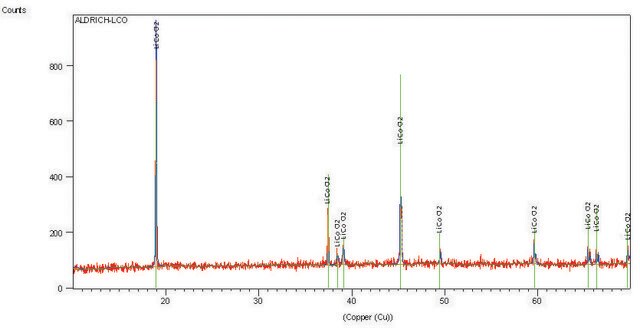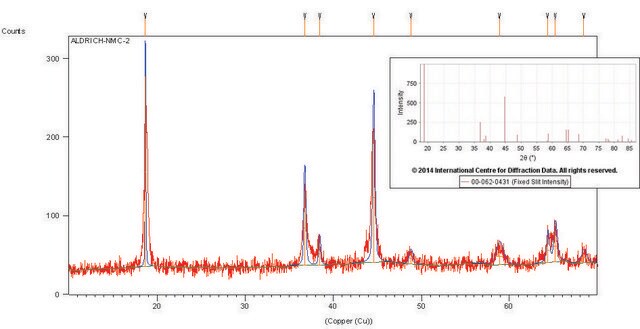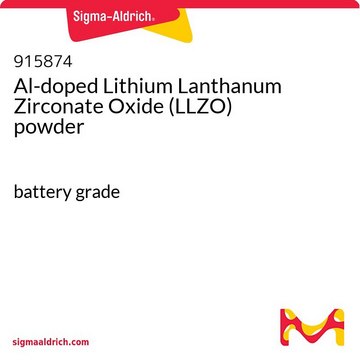759546
Lithium iron(II) phosphate
powder, <5 μm particle size (BET), >97% (XRF)
Synonyme(s) :
Ferrous lithium phosphate, Iron lithium phosphate, LFP, Triphylite
About This Item
Produits recommandés
Qualité
battery grade
Niveau de qualité
Essai
>97% (XRF)
Forme
powder
Poids mol.
Mw 157.76 g/mol
Composition
LiFePO4
Caractéristiques du produit alternatif plus écologique
Design for Energy Efficiency
Learn more about the Principles of Green Chemistry.
sustainability
Greener Alternative Product
Taille des particules
<5 μm (BET)
Pf
>300 °C (lit.)
Densité
3.6 g/cm3 (lit.)
Application(s)
battery manufacturing
Autre catégorie plus écologique
InChI
1S/Fe.Li.H3O4P/c;;1-5(2,3)4/h;;(H3,1,2,3,4)/q+2;+1;/p-3
Clé InChI
GELKBWJHTRAYNV-UHFFFAOYSA-K
Vous recherchez des produits similaires ? Visite Guide de comparaison des produits
Description générale
Application
Caractéristiques et avantages
✔ Achieves 1000s of cycles
✔ Safer than cobalt or manganese-based cathode materials
✔ Reliable performance
Informations légales
Produit(s) apparenté(s)
Code de la classe de stockage
11 - Combustible Solids
Classe de danger pour l'eau (WGK)
WGK 1
Point d'éclair (°F)
Not applicable
Point d'éclair (°C)
Not applicable
Faites votre choix parmi les versions les plus récentes :
Déjà en possession de ce produit ?
Retrouvez la documentation relative aux produits que vous avez récemment achetés dans la Bibliothèque de documents.
Les clients ont également consulté
Articles
Professor Qiao’s laboratory lays out recent advances in conversion type lithium metal fluoride batteries. This review explores key concepts in developing electrochemically stable microstructures for wide Li-ion insertion channels.
Electrode Materials for Lithium Ion Batteries
Li-ion batteries are currently the focus of numerous research efforts with applications designed to reduce carbon-based emissions and improve energy storage capabilities.
The critical technical challenges associated with the commercialization of electric vehicle batteries include cost, performance, abuse tolerance, and lifespan.
Notre équipe de scientifiques dispose d'une expérience dans tous les secteurs de la recherche, notamment en sciences de la vie, science des matériaux, synthèse chimique, chromatographie, analyse et dans de nombreux autres domaines..
Contacter notre Service technique












